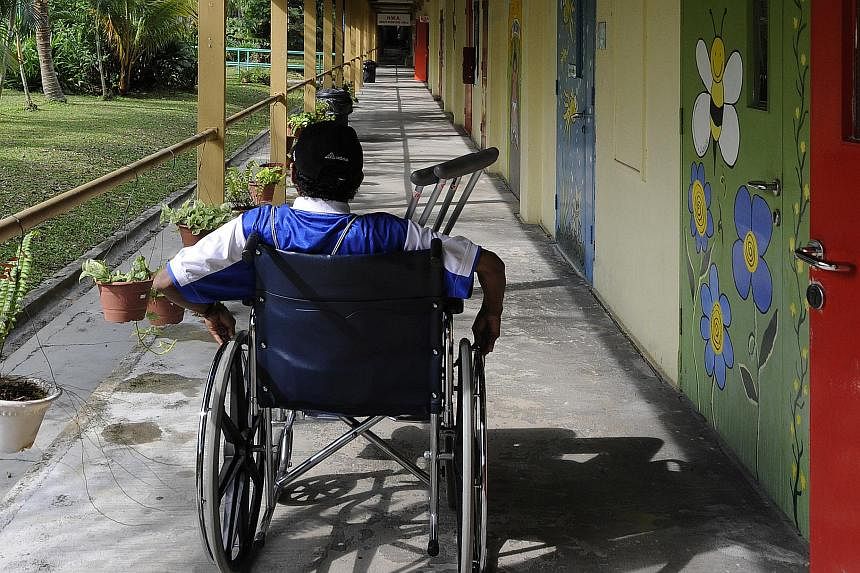SINGAPORE – Most people would think of long-term disability insurance as something for the frail elderly. But more than half of those getting payouts from CareShield Life, the national long-term disability insurance, are under 40 years old.
Many of these younger recipients have been suffering from chronic ailments since birth – conditions that affect them so much that, without help, they are unable to perform at least three of the six activities of daily living, such as showering or walking.
The Ministry of Health (MOH) was not able to provide figures for 2023. It said that in the last three months of 2020, 90 people started receiving monthly payouts. In 2021, the number rose to 353 people, and in 2022, 638 people did.
Their ages ranged from 30 to 88, with a median age of 39 years.
MOH said most of the recipients are from the younger cohorts, born in or after 1980, for whom CareShield Life is mandatory.
It encourages older cohorts born before 1980 to sign up for the plan, which provides better protection in the event of severe disability.
When it was launched in October 2020, CareShield Life became compulsory for all Singaporeans and permanent residents born in or after 1980. All who were from 30 to 40 years old were automatically enrolled. Younger cohorts are enrolled on their 30th birthday.
To encourage people in their 40s and older to join the scheme, the Government is offering an age-based incentive ranging from $500 to $4,000 to offset their premiums, if they join by the end of 2023.
On top of that, there is a means-tested subsidy of up to 30 per cent to help pay the premiums. The annual premiums are paid only up to the age of 67 or over 10 years – whichever is longer – although people are protected for the rest of their lives.
Older people who are already on ElderShield, the precursor of CareShield Life, will have those premiums taken into account if they upgrade to CareShield Life. The ElderShield schemes have lower payouts of $300 or $400 for up to either five or six years.
MOH said that as at December 2022, there were 1.47 million CareShield Life policyholders. Fewer than half, or about 635,000, were born before 1980.
There are about 762,000 ElderShield policyholders who have not upgraded to CareShield Life.
“We encourage this group to sign up for CareShield Life, if they meet the eligibility criteria of not having severe disability currently,” MOH said.
“The advantage of signing up for CareShield Life is that it will give them stronger protection. The payouts from CareShield Life are significantly higher than those for ElderShield, and are for a longer duration.”
In 2022, CareShield Life paid $4 million to recipients, bringing the total amount disbursed since its launch to $6.5 million.
With CareShield Life, they get $600 or more a month – the amount depends on when the payout starts. There are no restrictions on what the money is used for.
Once a policyholder starts receiving a payout, the amount received will be fixed at that amount for subsequent years. If payout is made to someone over the age of 67, the payout is based on the amount in force when the person turned 67.
Payment is for as long as the disability remains; for those who are permanently disabled, it will be for the rest of their lives.
To qualify for payouts under any of those schemes, a person has to be unable to perform at least three out of six activities of daily living – feeding, washing, going to the toilet, moving or walking around, dressing, and transferring from a bed to chair.
The Government projected that one in two people who are healthy at age 65 will develop severe disability later in their lives. For half of them, the disability will last four years or less. But three in 10 are likely to be severely disabled for a decade or more.
Since the launch of CareShield Life, 46 people who had received payouts have died.
In 2022, 73 per cent of CareShield Life claims were approved. More than half of those not approved did not complete their application, including some who had died before the assessments could be completed.
One in four rejected claims was due to the person not meeting the disability criteria. Such assessments can be made by more than 500 healthcare professionals islandwide. House calls for the assessments are also available.
The $100 fee for a clinic assessment and $250 for a house call are waived for first-time claimants. If the person is unsuccessful but his condition worsens, and he later requests another assessment, the fee is collected but will be reimbursed if the claim is successful.
MOH said 80 per cent of claims are processed within 15 days. Only 10 per cent of claims take 20 days or more.
To adjust for inflation, both the premiums and payouts go up annually. This is fixed at 2 per cent a year from 2020 to 2025. Future increases will be decided by the CareShield Life Council.


